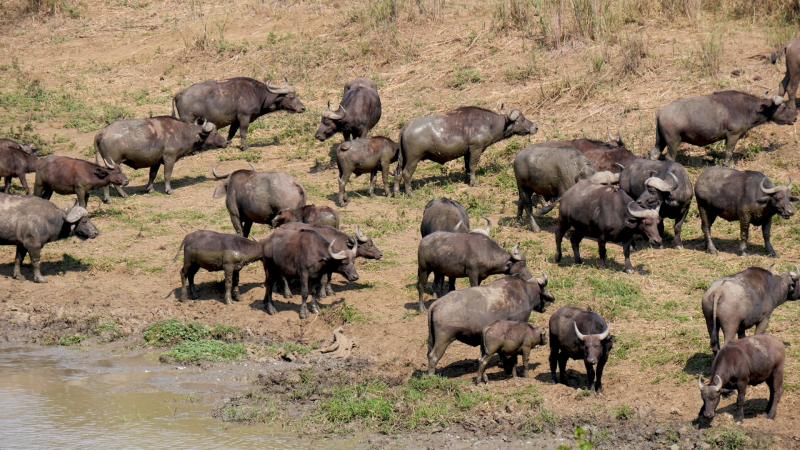
In a new study, a team of researchers at the Centre for Ecological Sciences, Indian Institute of Science have developed a model that takes mobility as basis to explain the dynamics of cohesion and cooperation in social communities.
Led by Dr. Vishwesha Guttal, Assistant Professor at IISc, the researchers say their findings could prove helpful in understanding metastasis of tumour cells and designing interventions to prevent it. Generally, cancer cells migrate between different organs individually or collectively as clusters of cells held together by adhesive molecules. The tumour cells cooperate among themselves forming groups to overcome the body’s defences. Now, if the cancer cells could be induced to secrete more adhesive molecules, the cost of adhesion would decrease, forcing the cooperators to form groups even beyond sustainable limits. The arms race between the cooperative and non-cooperative cells would destroy the cooperative cells, making the individual cells susceptible to be killed by the body’s defenses.
However, Mr. Jaideep Joshi, a PhD student involved in the study, explains that more involved models will be necessary to realistically accomplish this.
In the newly proposed collaboration model, the researchers have modelled individuals as self-interested beings, and having two evolvable traits – their tendency to bond with others, and their strategy to co-operate with others or defect. The model considers that offsprings in the group are dispersed randomly, and interactions occur among individuals who do not have knowledge of others’ behavioural traits or payoffs.
Classically, it has been argued that cooperative interactions evolve mostly among genetic relatives or individuals in close-knit environments – like the lions or the buffaloes. There is also the factor that these animals are mobile and often split and merge depending on the availability of food. What, then, could be the motivation for cooperative interactions to emerge among such dynamic groups that are not genetically related?
“Much of the earlier research on cooperation thought that mobility was a hindrance to the evolution of cooperation. This is because mobility allows defectors to invade and destroy clusters of co-operators, which are necessary for cooperation to sustain”, says Mr. Joshi. In their study, published in the journal PLOS Computational Biology, the researchers have considered two scenarios for mobility – one, where the individuals move through self-propulsion such as fishes and birds, and second, where the individuals move due to the flow of the medium they live in such as microbes.
The Battle at Kruger, a thrilling viral shot by an amateur photographer while on a safari at the Kruger National Park, South Africa, gives us a glimpse of cooperation in animal societies. It shows a pride of lions carefully planning a hunt, prowling on a Cape buffalo calf, and snatching the prey from the jaws of a crocodile, which had plans of sharing the feast. What’s more baffling is how the herd of buffaloes then unite to fight with the pride and take their brood back to safety.
Two aspects stand out in this wild encounter – cooperation among the individuals of the pride and the herd, and the seeming price an individual pays to cooperate. In the case of lions, the pride would have had to share the prey, if they were successful, as against an individual devouring it all. On the flip side, may be a single lion might have failed to catch the prey without the pride! In the buffalo herd, the cooperation among each of the members helped them chase the lions away and take back the calf, but each member risked the wrath of the lions, sustaining a few scratches. So, in spite of an apparent disadvantage, how does cooperation evolve in nature?
An individual’s tendency to bond with the other could range from being strong, where they end up living in groups, to weak, where they remain solitary. However, stronger the cohesive tendency, greater is the cost. For example, more cohesion would requires production of adhesion molecules in microbes or could lead to decreased vigilance in larger organisms. The choice to cooperate or defect also has different payoffs.
The authors computationally investigated how the tendencies to cooperate and bond evolve over 1500 generations for a range of mobility values such as individual speed and velocity of medium, and compared it with two systems where cooperative tendencies are not expected to evolve – one where cooperation is through chance encounters as in the case of bears that are mostly solitary, and another where the hypothetical group is already one cohesive unit.
The researchers observed that mobility facilitates the evolution of cooperation and the formation of groups over a diverse range of mobility values. The proportion of cooperators was higher when both the cooperative and cohesive traits evolved. Even when all individual were defectors, the evolved population learnt cohesive behaviour, forming groups. In addition, the evolved population saw a coexistence of both defectors and cooperators. This was possible due to a difference in the bonding strength among cooperators and among defectors. It was observed that an arms race resulted with the defectors trying to match up to the co-operators in every generation and the co-operators evolving their tendencies until the cohesive groups became too costly to sustain. This resulted in self-sorting into groups that merge and split.
The study demonstrates that, rather than hinder it, mobility can help animals evolve cooperation to form groups even among unknown individuals without any kinship. “Our study is like a thought-experiment, but aided by sophisticated theoretical and computational tools. However, our model can easily be adapted to real systems by incorporating features specific to those systems. These could include cancer cells, quorum sensing bacteria, mixed species bird flocks, or even grouping mammals such as spotted deer, baboons and elephants”, signs off Dr. Joshi.






